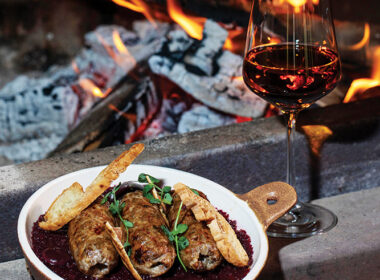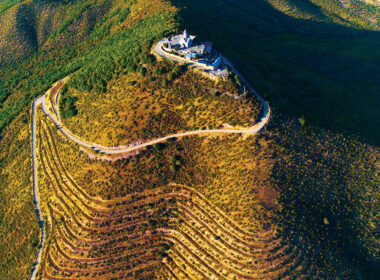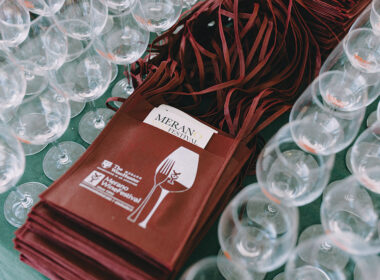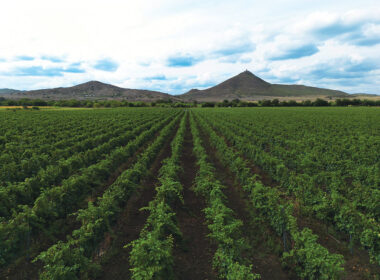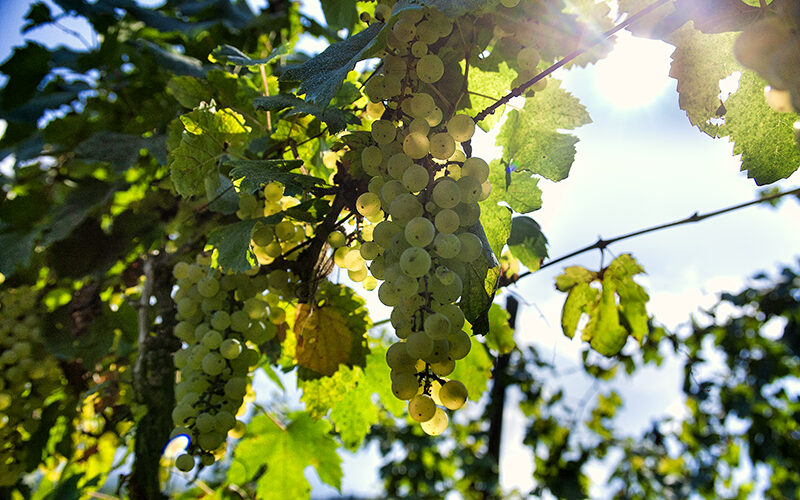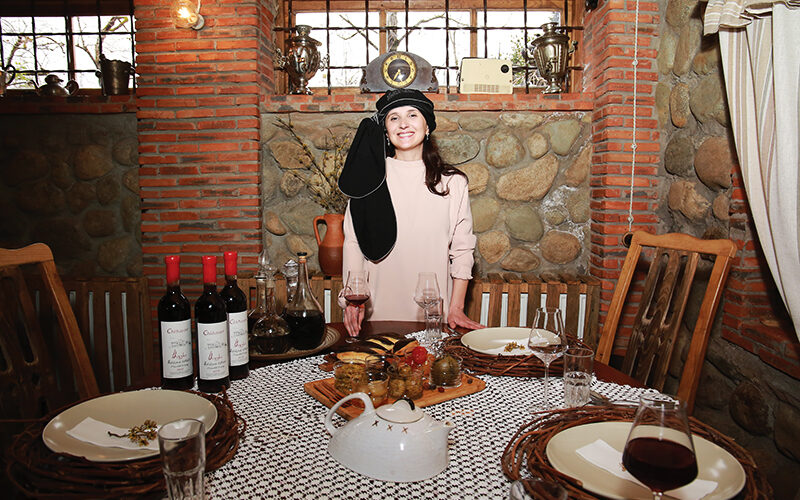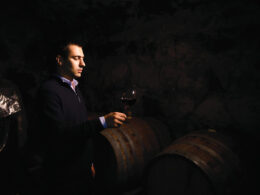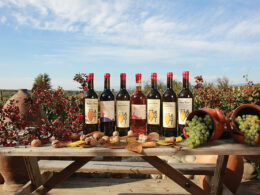Akaki is a first-generation winemaker. He says that no one in his family made or bottled the wine before. Family-owned vineyards of Aleksandrouli, Mujuretuli, Rachuli Tetra, Rachuli Tsolikouri, Rachuli Mtsvane, Dzelshavi, and Saperavi are what motivated him to start everything by himself. These vineyards have been in his family for a long time, but all of the grapes were previously sold to factories. The young winemaker wanted to change that, so he went on to receive the appropriate education and began to make wine.
His history of winemaking start in 2017 when he decided to make wine with his resources. The first tries turned out to be unsuccessful. “My first experiment taught me a great deal. It gave me strength to offer a better product to the market from 2018”, – Akaki says. 2018 is when he created his winery “Qve Sheni Chirime” which started producing Khvanchkara. The phrase “qve sheni chirime” is an old saying that they used in Racha. “I wanted to introduce my wine with this old Rachian saying, bringing the ancient history of Racha back to life. In Racha, “qve sheni chirime” (which means: “I will be there to share your good and bad and you can always count on me”) was used to address people that were cherished. When the host wanted to express gratitude, respect, and appreciation towards his guests, he would always say “qve sheni chirime”. My brand was created with this in mind – we always listen to our customers and respect their attitude towards our wine”.
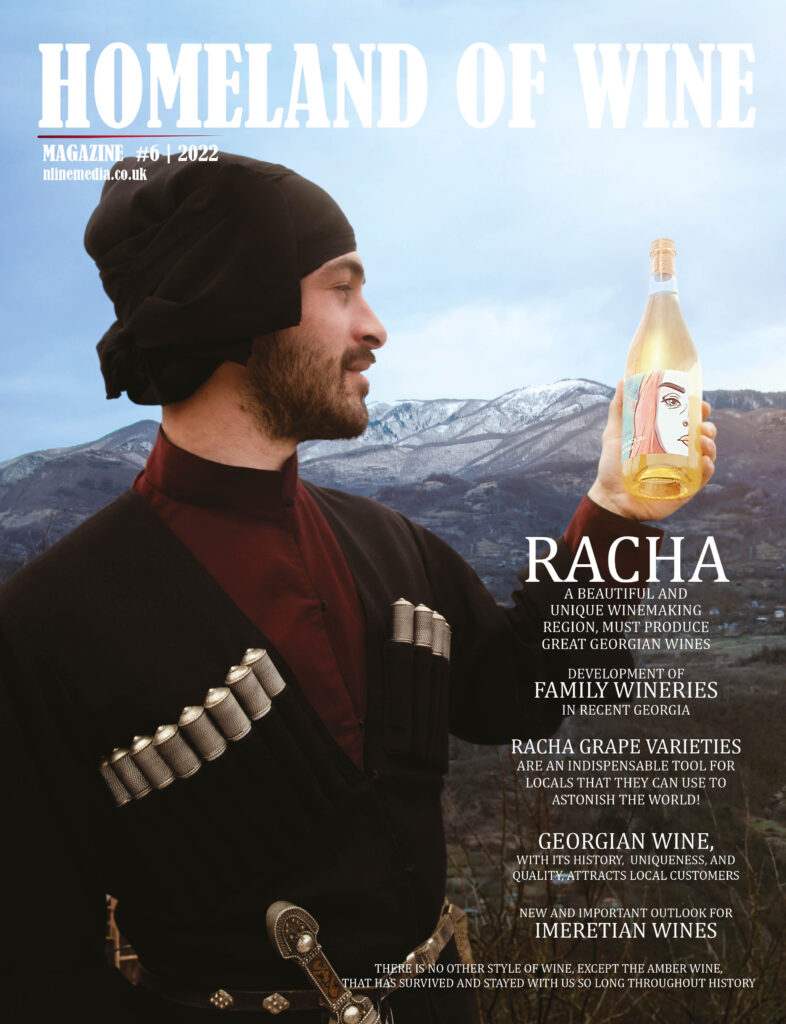
Winery “Qve Sheni Chirime” makes “Mzia” (dry red wine, made from Aleksandrouli, Mujuretuli, Saperavi, and Dzelshavi grapes), Khvanchkara and qvevri Tsolikouri. Akaki dedicated “Mzia” to his late mother. She was the one who grew and planted the grapes that this wine is made from. The family takes special care of them.
“Qve Sheni Chirime” wines were first exported in 2020. “Japan was the first country. Our wines were well-received and sold very quickly. The demand was very high, but there was a small problem: it was hard for the consumers to pronounce “Qve Sheni Chirime”. So, we decided to create a new brand called “Ambra”. In ancient Georgian, “ambra” means the aroma of the wine. It has a good sound to it and is easy to remember”, – says Akaki.
Today, “Ambra” makes 9 types of wine, along with experimental wines in form of Pet-Nats, which are quite demanded among the consumers. This is the first Rachian sparkling wine, made using the traditional Pet-Nat method.
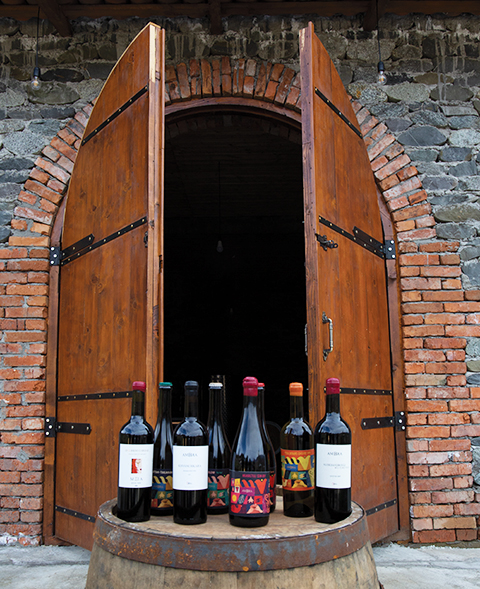
“Ambra” wines are exported to the Netherland, Italy, Belgium, and Poland, whereas “Qve Sheni Chirime” wines (Khvanchkara and “Mzia”) are exported to Japan. The winemaker plans to export “Ambra” wines to Japan as well. He is also actively negotiating with several bars that focus on natural wines.
TERROIRS
“We currently own 2 hectares of vineyards in Khvanchkara microzone, in the Bugeuli village. We have several varieties, eighty percent of which are Aleksandrouli and Mujuretuli. We also have Rachuli Saperavi, Rachuli Dzelshavi, Tsolikouri, and Rachuli Khikhva. The latter is an endemic Rachian variety that is on the verge of extinction. We only have a very small amount of it in our vineyards. We are trying to nurture it, so we can use to it make wine. We also have experimental plots with foreign varieties, such as Cabernet Sauvignon, Sauvignon Blanc, and Riesling. I think they will yield very interesting results”.
Akaki is the first winemaker to plant foreign varieties in Racha. He expects Riesling, for instance, to do very well, considering the local climate and soil, and he should be able to make interesting wine that he can present to local and foreign consumers with confidence.
“This Rachian wine made from a foreign variety will be the calling card of Racha. I am planning to make it using the classical method, but I do not exclude using the traditional one as well. Our experiment will show whether we should produce it in qvevri, or using the classical method – without chacha and stalks”.
Tazo Tamazashvili (sommelier): These varieties can be blended with Georgian ones, which is a widespread practice in the world. To me, Akaki is a revolutionary that will change the region stylistically. These types of revolutions are what Racha needs to compete with the trendy wines of the world. Racha will be the exotic region that the world will recognize through the magnificent wines, that express the peculiarities of this region, made with dedication“.
“Our vineyards are spread throughout different zones of the village, – says Akaki – We divided them according to the terroir, which gives our production a great advantage to produce different wines. We own seven terroirs in total. We kept the names that our ancestors gave them. “Gaghma venakhi” (“The vineyard beyond”) is 45 years old, with Aleksandrouli and Mujuretuli that my grandfather planted. They make a complex, full-bodied, and aromatic wine. “Eras Namoskhali” (or “Eraseuli”) is 80 years old. I’ve heard that there was wine-cellar here before, with two- and three-tone qvevri that are now buried under the ground. I think we can sustain these vineyards for three more years. There are clay, limestone, and black soils here that produce very interesting, rich, and high-quality wines. We also own “Maiaseuli” – vineyards grown on a steep slope that my father bought from a lady named “Maia”. Although it’s harder to take care of this vineyard, we manage, and the grapes turn out remarkably well. Another vineyard we have is “Shuros Gaghma da Gamoghma” (“On both sides of Shuro”). Shuro is a small stream that flows seasonally and divides the vineyard. I and my father planted it and it’s relatively new. The vine is 5 years old, we have finally harvested it. We also have “backyard vineyards” of 10, 15, and 20 years of age that are around our house and winery. We have Rachuli Tetra, Rachuli Mtsvane, Tsolikouri, Aleksandrouli, Mujuretuli, Dzelshavi and Saperavi. We use them in cépage and coupage, mixing ready wines. The results are very interesting and memorable for our customers”.
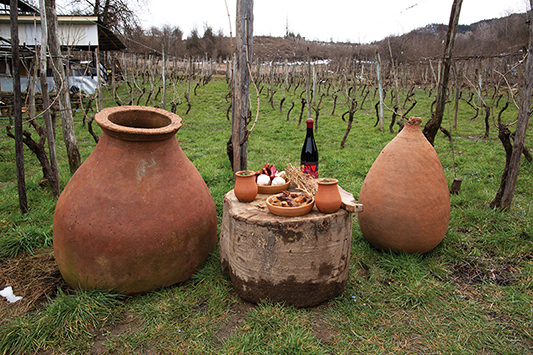
Tazo Tamazashvili: “Ambra has three types of Pet-Nats. There are a blend of four varieties – Tsolikouri, Rachuli Tetra, Rachuli Mtsvane and Khikhva, Tsitska-Tsolikouri, and a red, naturally semi-sweet Pet-Nat made from Mujuretuli.
White Pet-Nats are refined, with pleasant acidity. Both lean towards white stone fruit and citrus aromas. Their ideal pairs are seafood and fresh salads. That being said, I would take a little bit of a risk and pair Tsitska-Tsolikouri with sweet and sour desserts. Mujuretuli is a dessert Pet-Nat that complements chocolate desserts and various berry tarts.
Tsitska-Tsolikouri blend is a very refined, aromatically rich wine. Delicate tones of mineral stone add very well to the fruity aromas (apricot, pear, overripe apple). It is a balanced, fresh, light Summer wine.
I would distinguish tones of sweet spices in Tsolikouri made in qvevri. They complement the aroma of ripe, dry fruits well. The acidity and tannins combine perfectly. It has a lasting finish, and could easily pair with Rachian as well as international cuisine: duck foie gras, chicken pâté, baked poultry meat, baked fish (dorado, seabass) with vegetables.
Reds: The blend of Aleksandrouli and Mujuretuli has aromas of fresh Spring berry fruits – raspberry, strawberry, rose water. The terroir sensitivity is well-expressed. The relationship between the soil, grape variety, and climatic conditions helps express the terroir sensitivities, tones of smoke, sweet tobacco, and black pepper. It has a lasting finish, with a good potential of bottle aging of 5-7 years. It is best with Rachian ham, and Lobio made with local recipes. It is ideal with Black Angus ribeye steak with various sauces.
The lightness of the red wine (lightness in the best way) and terroir are combined very well in Dzelshavi. The wine is refined and filled with fruit aromas – black plum, black currant, blueberry, overripe watermelon, and red raspberry. It is good for aging in bottles because it is interesting to see how molecular micro oxidation in the bottle transforms its aromas into aromas of leather, earth, tobacco, and smoke over the years.
Khvanchkara – The aromas of berry, earth and sweet spices (cinnamon, cloves, rose water) blend well in this naturally semi-sweet wine made with Aleksandrouli and Mujuretuli assemblage. It is ideal with Georgian desserts – pumpkin desserts, Tatara, and Pelamushi, as well as international ones, such as chocolate with sea salt, where the salty and sweet components duplicate and create a four-way combination with acidity and sweetness of the wine.
“Mzia” – made in qvevri with Aleksandrouli and Mujuretuli grapes and aged in oak barrels. This wine has an ideal balance of tannins, acidity, and body. This complex, refined wine has to be paired with rich meat dishes from international cuisine. It is ideal with hot dishes from Asian cuisine.

